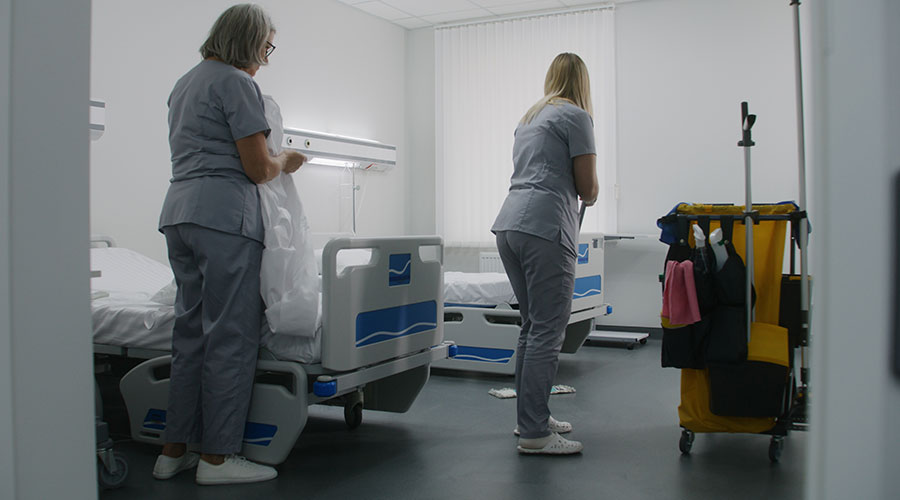I have been fortunate throughout my career to have been affiliated with organizations that invested in my professional development. Most of my certifications, course work and mentoring have revolved around Lean programs that provide the tools necessary for organizational improvement and optimization. Over time, I have come to realize that many of these tools are extremely complex and require a great deal of explanation.
I have actually spent more time explaining some of them as opposed to resolving the issue at hand. I knew there had to be a better way.
After evaluating all of the Lean tools and processes and understanding their strengths and weakness, I found that applying three simple steps significantly improved outcomes, particularly related to cost cutting and productivity which rank among the highest concerns in the workforce. The following three steps are not random and must be completed in order. Experience has proven that failing to work through each step will result in costly setbacks and failures.
• Standardize – Improvement activities are not manageable when work management processes are in a constant state of change.
• Stop – Before trying to do something faster, ask whether it needs to be done at all.
• Shorten – Once standardized and trimmed by stopping, look for ways to shorten the time to execute tasks. This is often accomplished through training or technology.
Standardize
Standardized work management is a detailed and documented (written and visual) plan that follows a series of predefined steps. This plan, better known as a Playbook, describes processes and best practices that Facility Management and Technicians can follow in the execution of their duties to support the organization’s mission. Playbooks are designed to minimize process variation introduced by the environment and / or worker and to eliminate unnecessary waste that is killing productivity. The “8 Wastes” of Lean/Six Sigma are transport, inventory, motion, waiting, overproduction, over processing, defects, and intellectual.
Without standardized work management, improvement activities are not manageable because processes in a constant state of change cannot be improved. I am sure many of you have heard the phrase “It is like changing a tire while driving down the road.” To quote another common phrase, “It is easier to fight an enemy you can see”. In this case, the enemy is waste. Standardized work management provides a visual of the enemy and allows for the identification and elimination of root causes in order to permanently resolve issues.
Stop
Once work management processes have been identified it is then necessary to determine their value. Before trying to do something faster, ask whether it needs to be done at all. Probably the quickest and cheapest improvement that can be made is to simply stop doing non-value added activities and maintenance. Just because you are doing something and doing it well, doesn’t make it important or valuable. This is commonly applied to Preventive Maintenance (PM), Key Performance Indicator (KPI) and general reporting. Leadership often asks, “How can we get faster reporting?” or “How can we get more PMs done”?
The real question should be, “Should we even be doing this?” and if so, “What is the value”?
Let’s start with KPIs and reporting. Think of each KPI and report as a product you have to buy. It takes time and effort (i.e. money) to read data, enter data, gather data, analyze data, create written reports and graphs and communicate that data via email or meetings. Look at each report and KPI. How much does it cost to create that product per year? Now, determine whether the cost is returning a value that is equivalent to the cost required to create it. In one such evaluation, a single KPI cost the company $11,000 per year to produce. When asked whether leadership felt the value was equivalent, the answer was a resounding no and thus it was eliminate. Ultimately, five total measurements were eliminated which saved the organization almost $20,000 per year. So, what is the cost for the products (KPIs and reports) that you are producing today?
Regarding PMs, productivity losses are commonly due to the “This is what we have always done” mentality. Other factors are misinterpreted regulations and the fear of running equipment to failure. Yes, you can save money by running some things to failure. Adopting a “No Scheduled
Maintenance” practice, or run to failure, is an acceptable policy as long as you stay within regulatory, warranty and client mission support guidelines. If the regulations or risk is not tolerant of failure, reduce the frequency of the PM within allowed guidelines.
Specific to healthcare, there is one regulatory PM that is conducted at excessive intervals which costs money and is actually increasing the risk of failure. Emergency Generators are universally considered critical to a hospital’s operation. Many healthcare facilities are conducting weekly run tests to “ensure they are working”.
The National Fire Protection Association (NFPA) and The Joint Commission regulations actually mandate a weekly inspection and a monthly run, not a weekly run. Does running it weekly really make it more reliable? Do you start your car right before bed to ensure it will start in the morning and does that practice increase the reliability?
One of the most common failures for generators not starting is that the start switch is not in auto, which most often is a result of being left out of position after testing.
So, running it weekly exposes you to 52 potential failures versus 12 if you followed regulations, thus actually increasing the risk of failure for that one asset. In one study, simply realigning the generator PMs to the regulations resulted in $19,851 saved per year in labor and fuel. That is $19,000 saved with no investment and an
additional benefit of reducing the risk of failure. That is just one PM on one asset. How many assets and PMs do you have?
Shorten
After processes have been standardized and information has been leveraged to eliminate non-value added activities, it is time to “shorten” the execution of various tasks. Why stop before shorten? “Shorten” often takes more data and thus may take more time for the standardized process to be executed. “Stop” can be done on historical failure data and analysis of regulations, warranty and client mission goals. If you spend time shortening a non-value added activity that will ultimately be stopped, you have just wasted money. Shorten also often requires an investment which will have to go through a business case development and approval process.
This is where most organizations make a mistake. An investment is made in technology or continuous improvement consultants prior to developing a standardized work management process or simply eliminating non-value added activities. Technology is a tool, not a solution. It should shorten the time it takes to execute a standardized process.
A perfect example is electronic dispatching of work to technicians. Without a standard work management process, technicians will get work orders faster and eliminate motion waste since they don’t have to return to the shop, but, what about the 7 other wastes? Are their jobs prioritized correctly and planned with all the parts, number of people, tools and availability to the equipment or space? New technology in the same non standardized work environment enables more waste to occur faster.
There is definitely no shortage of continuous improvement tools and processes available today. Applying the Three Steps will aid in focusing on the improvements needed instead of managing the improvement process. As Albert Einstein said, “Everything should be made as simple as possible, but not simpler.” Test the steps against your processes to determine the potential for savings
Timothy Schipperis a regional director of engineering solutions at CBRE Healthcare.
Read the article with full graphics.

 Disinfectant Dispensers in Healthcare Facilities Often Fail to Deliver Safe Concentrations: Study
Disinfectant Dispensers in Healthcare Facilities Often Fail to Deliver Safe Concentrations: Study Duke University Health System Receives $50 Million for Proton Beam Therapy Center
Duke University Health System Receives $50 Million for Proton Beam Therapy Center UT Southwestern Experiences Data Breach Through Calendar Tool
UT Southwestern Experiences Data Breach Through Calendar Tool Protecting Patient Data: Strategies and Tactics
Protecting Patient Data: Strategies and Tactics Duke Health to Acquire Lake Norman Regional Medical Center
Duke Health to Acquire Lake Norman Regional Medical Center